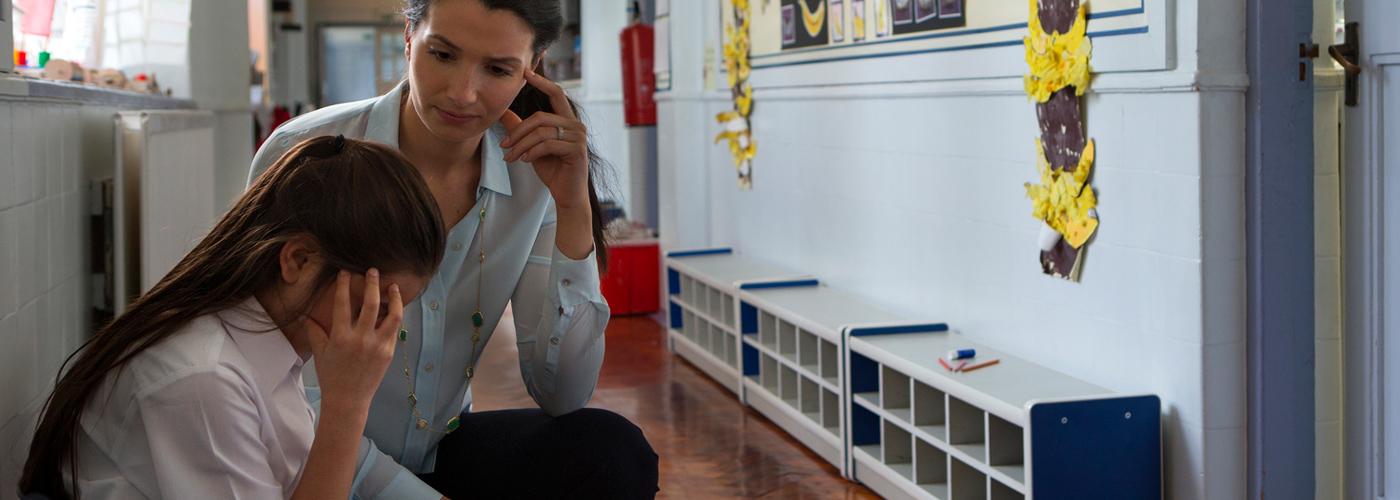Search Results for Special Education
The Sometimes Long and Winding Road to an Individualized Education Program
Written By Geoff Campbell | Resource Creation By Bridget Morton | Design By Sunny DiMartino
Maintaining an open line of communication with parents is important and often difficult, even in the best of circumstances. This is especially true when a struggling student is being evaluated for a possible disability—and an IEP—and a teacher’s continued updates throughout the process can provide worried parents with much-needed reassurance.
Advocating for your Adopted Child with Complex Developmental Trauma
Written By: Aleksandra Corwin, Lizzie Vance | Resource Creation By: Bridget Morton, Keli McNeill | Design By: Sunny DiMartino, Nathan Lueth, Christy Bui
Lori Hetzel is the mother of a child diagnosed with reactive attachment disorder (RAD). She describes the struggles her family encountered obtaining special education and resources for their daughter after they adopted her from Russia at age nine.
Sitting in the Light of Human Connection
Written By: Katie Gutierrez
A reflection on the beauty of special education staff and their dedication to the kids with disabilities that they serve. Bodies of Light.
Binders and Breakdowns: A Mother’s Introduction to the Individualized Education Plan Process
Written By: Julie Wallach | Resource Creation By: Bridget Morton | Design By: Christy Bui
An Individualized Education Plan takes time to create and implement, often requiring a year or more of testing, meetings, and decision-making to determine appropriate educational instruction and supports for a student with special needs. When Angie digs into the process, she learns more about education than she ever thought possible, and wades through bureaucracy, advocating for her son.
Returning to Safety: Understanding and Reducing Self-Injurious Behavior
Written By: Julie Wallach | Resource Creation By: Bridget Morton | Design By: Sunny DiMartino
A seven-year-old girl's increasingly extreme self-injurious behavior requires understanding, thoughtful solutions, and careful planning. After a very challenging period of time, Lyla* receives the adult understanding, special education, and therapeutic care she needs to keep herself safe from her own harm.
Navigating “The Cliff”: When Your Child with Autism Grows Up
Written By: Amanda Ronan | Resource Creation By: Bridget Morton, Keli McNeill | Design By: Sunny DiMartino, Nathan Lueth
When a child with Autism Spectrum Disorder grows up they are faced with new challenges. Learn more about how you can navigate through these and obtain your child's bright future.
Scaling Emotional Hurdles in the Classroom with Emotional Scaling
Written By: Geoff Campbell | Resource Creation By: Bridget Morton | Design By: Christy Bui, Sunny DiMartino
Some children have difficulty understanding their emotions, which can sometimes lead to class-disrupting episodes of anger. By working closely with students and using strategies like emotional scaling, teachers and educators can help students better understand emotions, changes in intensity, and coping strategies, which often leads to increased self-control in the classroom.
Feeling Guilty When Raising a Child With Special Needs
Written By: Pamela DeLoatch | Resource Creation By: Keli McNeill | Design By: Sunny DiMartino
Parents are often their own toughest critics. When the idyllic picture of what we thought our family would look like is a stark contrast to what the reality is, we add on even more stress by feeling guilty about what we did or didn't do in a a sea of very complex situations. For parents of special needs children, these instances are magnified, but they are recurring thoughts of every parent, nearly every day. Break the cycle of guilt for your sake and for the sake of your child.
Loving Your Child—No Matter What They Do
Written By: Pamela DeLoatch | Resource Creation By: Leeann Sanders | Illustrations By: Nathan Lueth | Design By: Sunny DiMartino
There are countless books on parenting, but nothing fully prepares you to be the parent of YOUR child. Every child is different, every situation is different, and every day can be different than the last. For parents of children with special needs, this is surely the case. There is no manual for how to handle meltdowns, rage episodes, and aggressive behavior and there is no clear cut answer to how you should FEEL about your children during these times of struggle.
The Emotional Turmoil Surrounding Extremely Aggressive and Violent Behavior in Your Child with Autism Spectrum Disorder
Written By: Amanda Ronan | Podcast Editing and Voiceover By: Heather Haynes | Design By: Sunny DiMartino
Parenting is always a journey that you can only try to be fully prepared for; however, parenting a child with autism spectrum disorder (ASD) can require an entirely different set of preparations. If you are the parent of a child with ASD, remember: you’re not alone—there are many options available for help.
Helping Students Follow Classroom Expectations and Rules with Collaborative Problem Solving
Written By: Amanda Ronan | Resource Creation By: Bridget Morton | Design By: Sunny DiMartino
Collaborative Problem Solving (CPS) is an effective alternative to delivering negative consequences to students who aren’t consistently following basic classroom rules and expectations. A relationship-based, nonconfrontational approach, CPS helps teachers and students work together to understand everyone’s concerns, then arrive at a mutually beneficial solution.
Stop, Think, and Don’t React: Encouraging Parents to Be Proactive – Instead of Reactive or Confrontative – During Times of Conflict
Written By: Rebecca Thomas | Resource Creation By Bridget Morton | Design By Sunny DiMartino
Parents may often find themselves resorting to ultimatums, threats of punishment, removing privileges, or simply throwing up their hands when their child with special needs is having a meltdown and exhibits demanding or irrational behavior. Before exercising rigid authority, which often worsens challenging behavior, parents can instead use personal coping strategies to help themselves stay centered and focused so they remain calm in the face of conflict and, in turn, help their child become more calm as well.